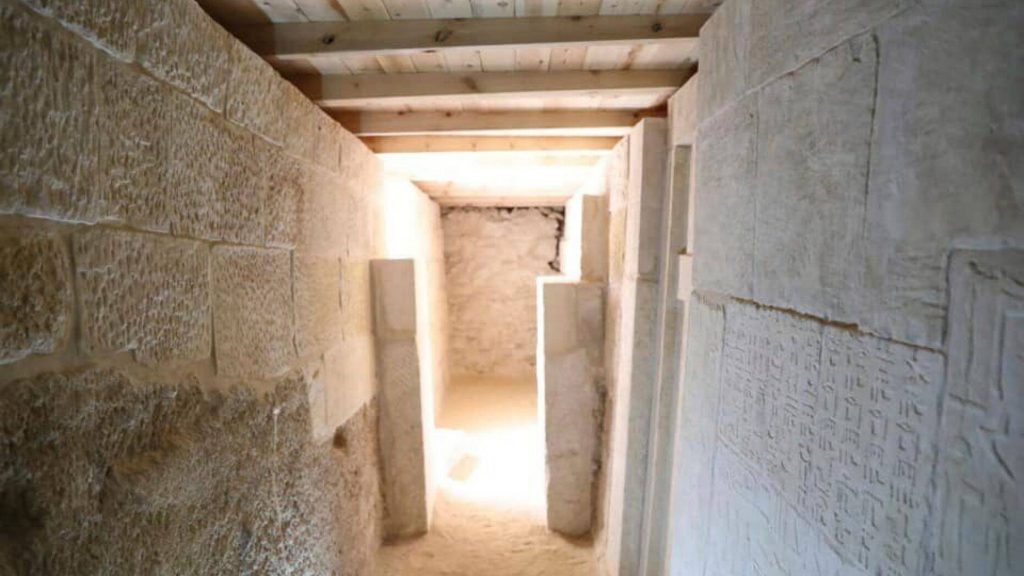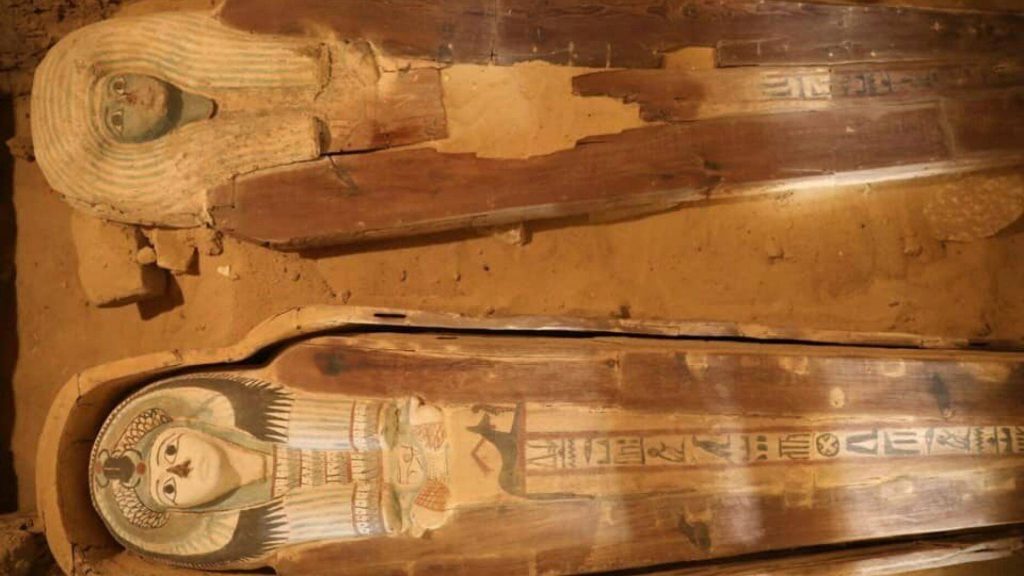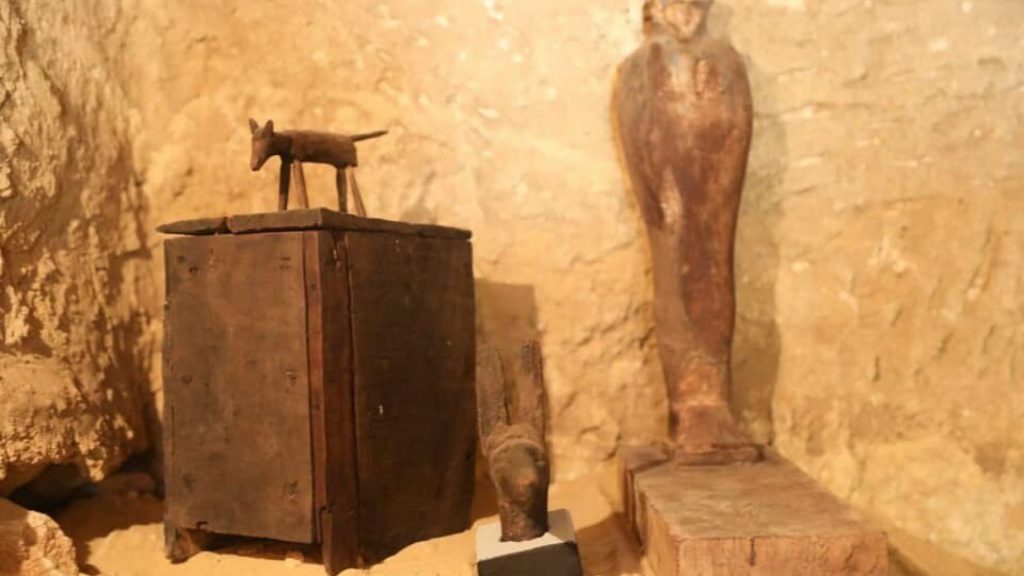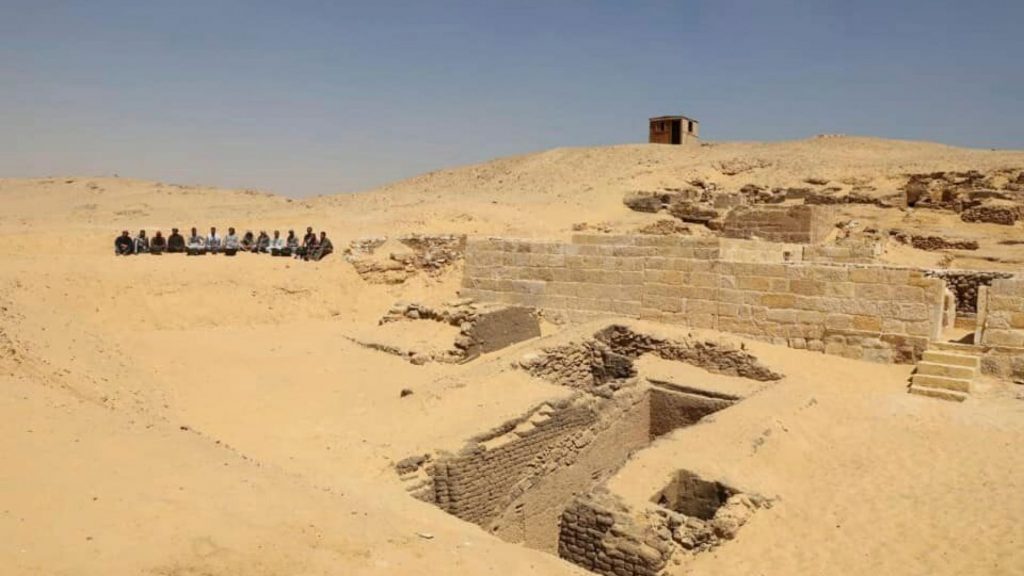4,500-Year-Old Burial Ground Discovered Near Egypt’s Great Pyramids

4,500-Year-Old Burial Ground Discovered Near Egypt’s Great Pyramids
Archaeologists in Egypt have discovered an ancient cemetery beside the famous Giza pyramids just outside Cairo. In a Facebook post, the Ministry of Antiquities in Egypt said it was discovered in the Giza Plateau, where pyramids are located.

The Secretary-General of the Supreme Council of Antiquities, Mostafa Waziri, said on Saturday that the cemetery is home to burial shaft and tombs of top officials, and a fine limestone statue from the 5th Dynasty of the Old Kingdom (2465-2323 B.C.).
One tomb belongs to the priest and judge named Behnui-Ka and to an official named Nwi, who is described as “the chief of the great state, overseer of the new settlements and the purifier of King Khafre.”
Ashraf Mohi, the head of the Giza Plateau archaeological site, says scientists know that the cemetery had been reused extensively in the Late Period (664-332 B.C.), as archeologists found painted and decorated wooden anthropoid coffins, and wooden and clay funerary masks from that period.

Egypt’s former Minister of Antiquities Dr. Zahi Hawass attended the event where the discovery was announced. The cemetery is located next to another graveyard where pyramid builders were buried, he said.
Egypt continues to reveal fresh details of its rich history. Archaeologists recently uncovered the 2,500-year-old remains of a powerful high priest in dramatic fashion.

The secrets of a mysterious “Tomb of the Warriors” were also recently revealed in a PBS documentary, and solving an ancient puzzle, archaeologists discovered the wreck of an extremely rare vessel that traveled the Nile around 2,500 years ago.
In another project, archaeologists recently found a large ram-headed sphinx that is linked to King Tutankhamun’s grandfather. In other projects, a teenage girl’s skeleton was discovered in a mysterious grave near the Meidum pyramid, south of Cairo.
This photo provided by Ministry of Antiquities shows an uncovered part of ancient cemetery at an area by the famed pyramids at the Giza plateau just outside Cairo, Egypt, Saturday, May 4, 2019. (Ministry of Antiquities via AP)
Last month, experts announced the discovery of dozens of mummies in ancient desert burial chambers.
Archaeologists also recently explained the strange brown spots on some of the paintings in King Tutankhamun’s tomb.

In January, archaeologists announced the discovery of ancient tombs in the Nile Delta north of Cairo.
In a separate project, two ancient tombs dating back to the Roman period were uncovered in Egypt’s Western Desert.
In another project, archaeologists discovered a stunning sphinx statue at an ancient temple in southern Egypt.
Last summer, experts unlocked the secrets of a mysterious ancient ‘cursed’ black granite sarcophagus. The massive coffin, which was excavated in the city of Alexandria, was found to contain three skeletons and gold sheets with the remains.

Archaeologists also found the oldest solid cheese in the tomb of Ptahmes, mayor of the ancient city of Memphis.
A mummy buried in southern Egypt more than 5,000 years ago has also revealed its grisly secrets, shedding new light on prehistoric embalming practices.